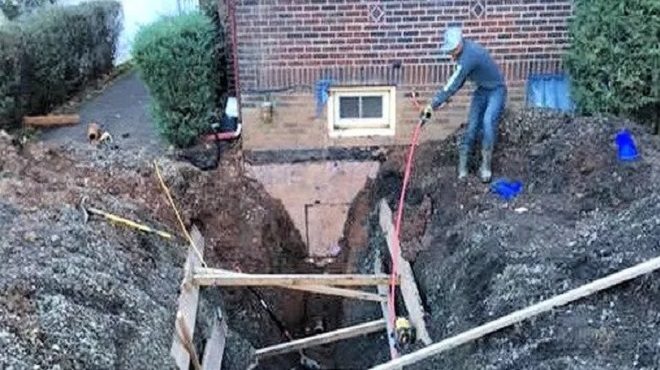Does Waterproofing Your Basement Really Work
In the Northeast we all just love our finished basements. They can be incredibly useful for additional storage, as kids’ playrooms, workout areas and even as man caves. But when houses were originally built, basements functioned more like refrigerators. They were colder than the rest of the house because they had cement floors and concrete walls and little else.
Then in the mid part of the century, homeowners wanted to create more living space, and the finished basement was invented. However, along with the additional space, came new issues related to water intrusion and therefor the need for waterproofing the basement. In most cases, finished basements include sheet rock walls in front of cinder foundation’s block walls. The sheet rock is an aesthetic feature to help make the area look more finished. However, it also prevents visible signs of water coming in from the foundation. And that’s where your sense of smell comes in.
If there is a musty odor in your basement, you likely have a water issue and are in need of waterpoofing your basement. To waterproof a basement, we recommend 5 essential barriers that can help keep your basement resistant to water and moisture. We know they work because we have experience in using them for our customers over many years.
01. Grading – The ground surrounding the foundation of your home should be properly graded away from the house so that water can move away as it accumulates. In many instances the ground has not been properly graded and water and moisture get trapped around the foundation which can create seepage in the foundation and in turn the basement walls. A finished basement with sheet rock may mask the evidence of trapped moisture so be sure to check the actual stone walls for any water damage.
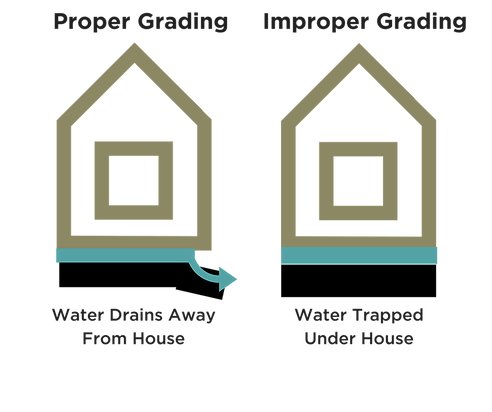
02. Downspouts – When downspouts are properly installed they can have a huge impact on moving water away from your home. They need to be angled properly and can be a very cost efficient fix if you have a moist basement. In the first diagram the elbow (the rounded corner in yellow below) is at a right angle which will allows water to pool, and in turn create excess moisture near the foundation.
In the second diagram the downspout is shorter so the water can flow down through the elbow and away from the house.
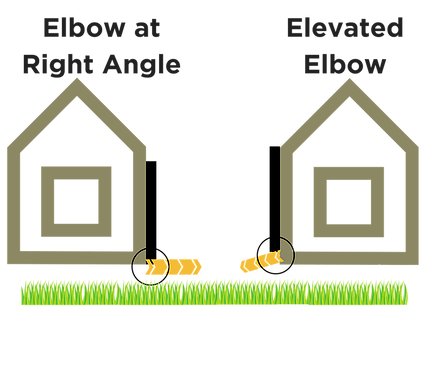
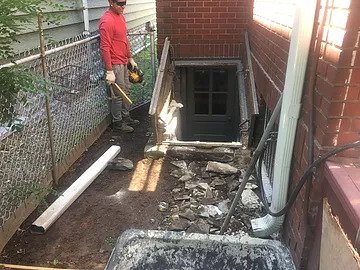
Above is a picture of a recent water proofing job we did. Notice how high the elbow is above the ground.
03. French Drain – Also known as water proofing, trench drains, perimeter drains and a bunch of other names, is basically a ditch dug around the perimeter of your home and filled with gravel in an effort to move surface and ground water away from the home.
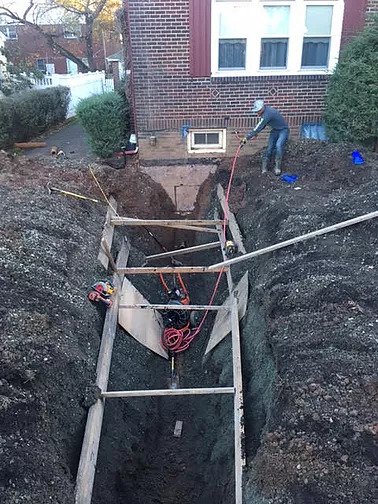
A perforated pipe can be placed in the trench to further move the water away. French drains last approximately 10 years before debris clog them. If your basement smells musty, have maintenance performed to ensure the French drains are operating to their fullest capacity. See our waterproofing service detail page here.
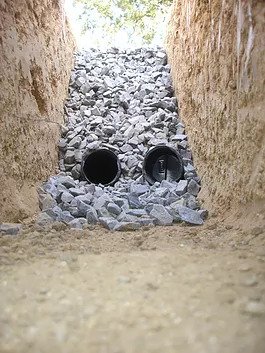
By w:User:24.57.242.6 – w:Wikipedia:Images_for_upload#French_drain_design_example (permalink), Public Domain, Link
04. Sump Pump – Electric pumps that are installed flush with the basement floor and connected to under ground pipes that pump ground water away from the home and into the street or connected sewer system. They are pretty easy to install on your own. You can view a “ho to” video below.
Remember, when you need your sump pump most is during heavy rain storms. Many times, the electricity goes out during such storms and your sump pump will therefore not work. There are battery back ups you can get that you can turn on should the electric not be working. However, these last only several hours.
05. Water Proofing Foundation – If water is coming in to the basement, and none of the above are reasons for the issue, there are likely settling cracks in it that need repair. This requires a trench dug approximately 8-10 feet deep on the side of the home where water appears to be seeping in.
Concrete is used to repair any and all cracks. It is then coated with a water proof material and half inch insulation is installed to create a water resistant barrier that will eliminate any water from penetrating the foundation walls.

If your home has all of these elements your home should stand up to the heaviest storms without a problem. If you notice an odor in your basement, call a professional and have them inspect the area. Preventative measures will save you a lot of money in the long run.


